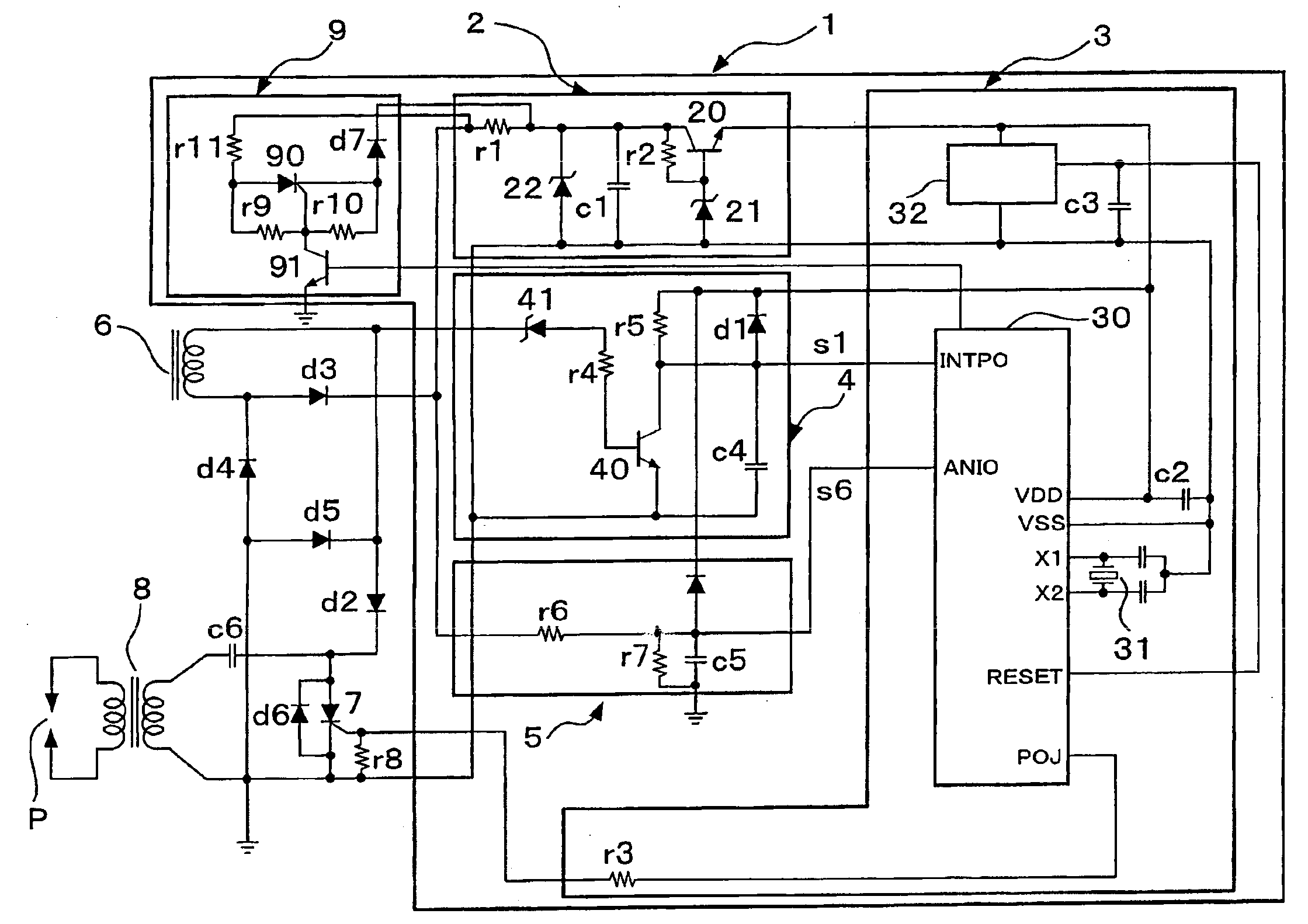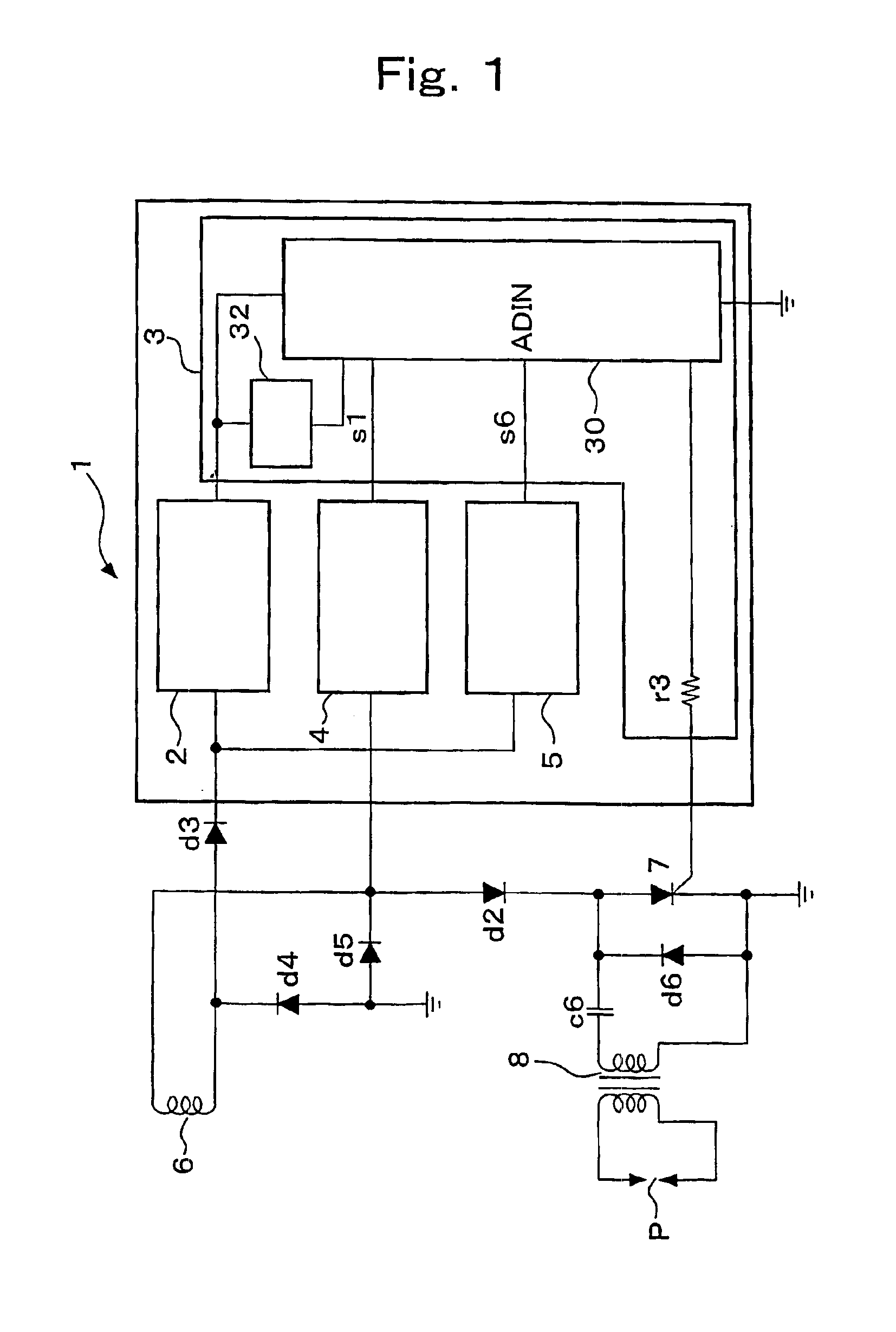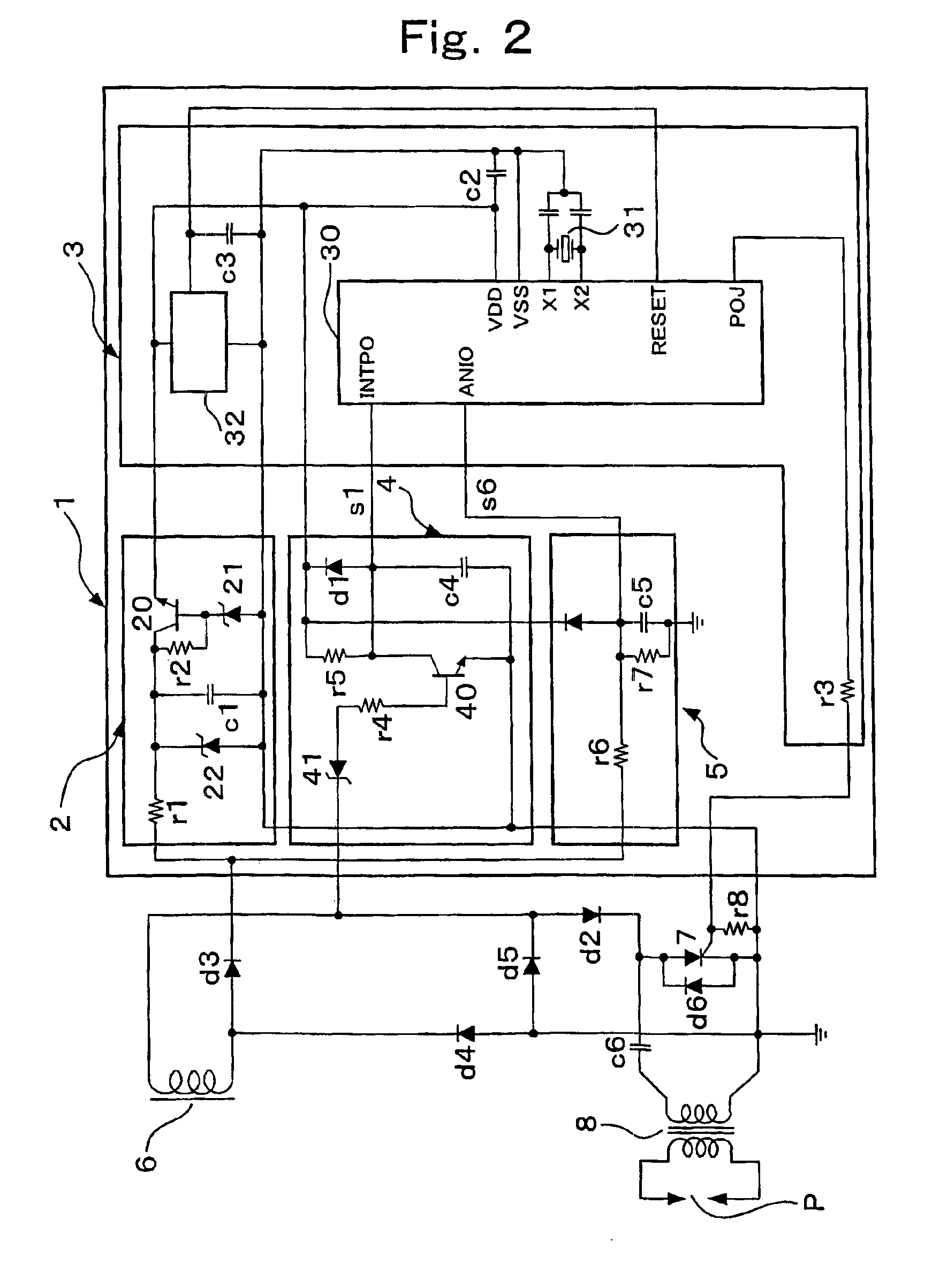Method and device for controlling ignition timing of ignition device for internal combustion engine
a technology of capacitive discharge and ignition device, which is applied in the direction of engine starters, automatic control of ignition, machines/engines, etc., can solve the problems of complicated handling, difficult re-starting of internal combustion engines, and complicated handling
- Summary
- Abstract
- Description
- Claims
- Application Information
AI Technical Summary
Benefits of technology
Problems solved by technology
Method used
Image
Examples
Embodiment Construction
[0123]Now, the present invention will be explained below with reference to the accompanying drawings in accordance with the embodiments.
[0124]FIG. 1 is a block circuit diagram illustrating a basic circuit configuration of an ignition timing control device 1 according to the present invention, the ignition timing control device 1 constituting an ignition device for an internal combustion engine in combination with a capacitive discharge ignition circuit. The ignition timing control device 1 includes a constant voltage power supply portion 2, a microcomputer portion 3, a cycle signal generation portion 4, and a voltage detection portion 5, each of the components being detailed in FIG. 2.
[0125]The capacitive discharge ignition circuit incorporating the ignition timing control device 1 includes an ignition coil 8 having an ignition plug P connected to a secondary side, a generator coil 6 constituting a high-voltage magneto generator driven by the internal combustion engine, a rechargeab...
PUM
 Login to View More
Login to View More Abstract
Description
Claims
Application Information
 Login to View More
Login to View More - R&D
- Intellectual Property
- Life Sciences
- Materials
- Tech Scout
- Unparalleled Data Quality
- Higher Quality Content
- 60% Fewer Hallucinations
Browse by: Latest US Patents, China's latest patents, Technical Efficacy Thesaurus, Application Domain, Technology Topic, Popular Technical Reports.
© 2025 PatSnap. All rights reserved.Legal|Privacy policy|Modern Slavery Act Transparency Statement|Sitemap|About US| Contact US: help@patsnap.com



